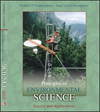 |  Principles of Environmental Science William P. Cunningham,
University of Minnesota
Mary Ann Cunningham,
Vassar College
Principles of Ecology: Matter, Energy, and Life
Learning ObjectivesAfter studying this chapter, you should be able to
I.describe matter, atoms, and molecules, and give simple examples of the roles of four major kinds of organic compounds in living cells. |
 |  |  | II.define energy, and explain the difference between kinetic and potential energy. |
 |  |  | III.understand the principles of conservation of matter and energy, and appreciate how the laws of thermodynamics affect living systems. |
 |  |  | IV.explain how photosynthesis captures energy for life and how cellular respiration releases that energy to do useful work. |
 |  |  | V.define species, populations, biological communities, and ecosystems, and understand the ecological significance of these levels of organization. |
 |  |  | VI.discuss food chains, food webs, and trophic levels in biological communities, and explain why there are pyramids of energy, biomass, and numbers of individuals in the trophic levels of an ecosystem. |
 |  |  | VII.explain the importance of material cycles, such as carbon and nitrogen cycles, in ecosystems. |
|



 2002 McGraw-Hill Higher Education
2002 McGraw-Hill Higher Education